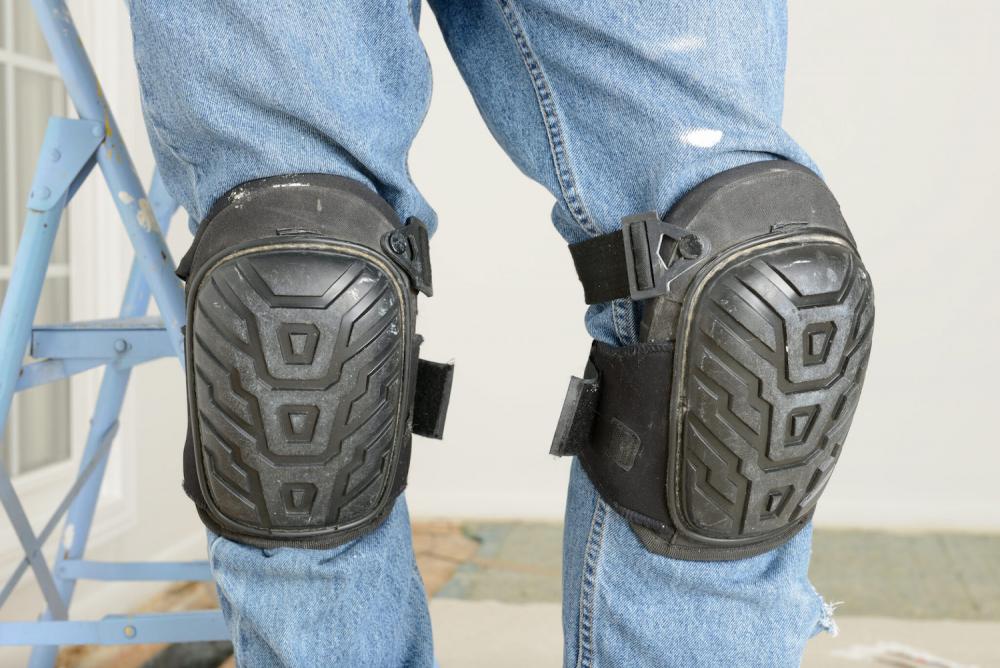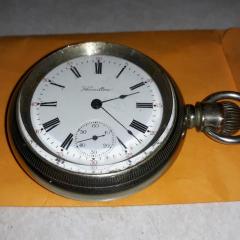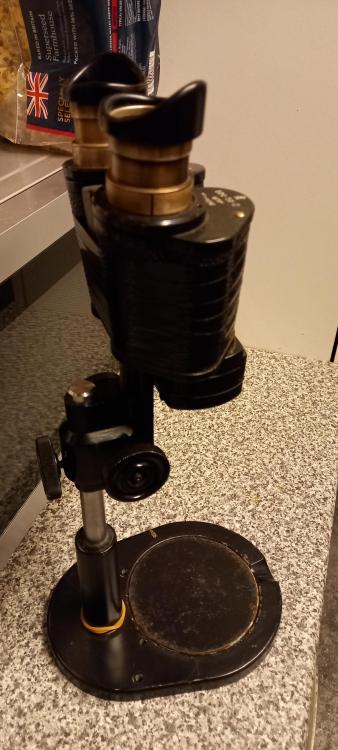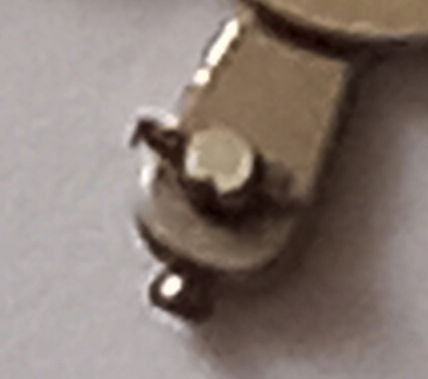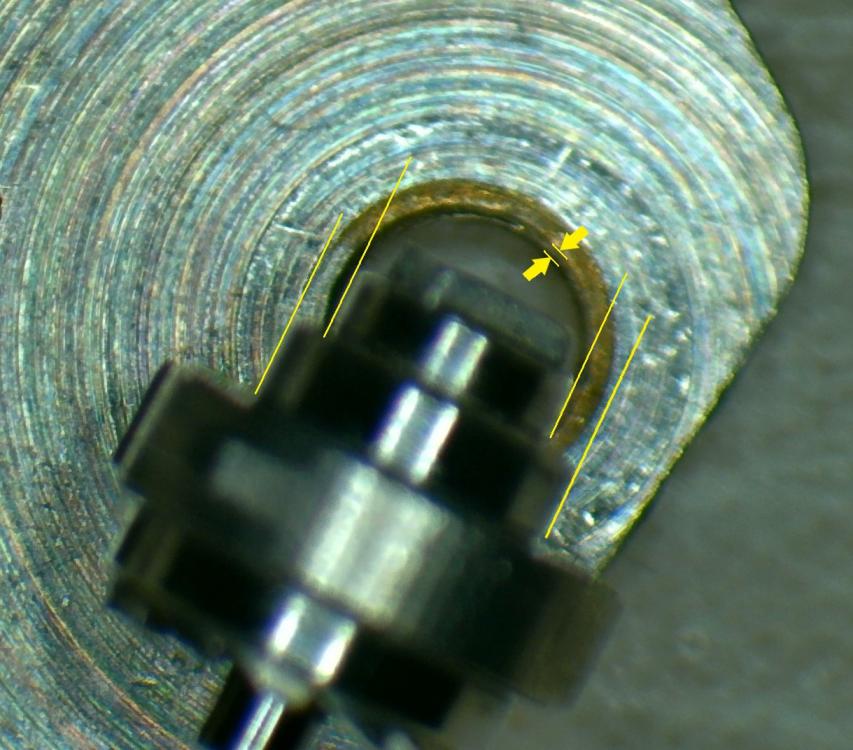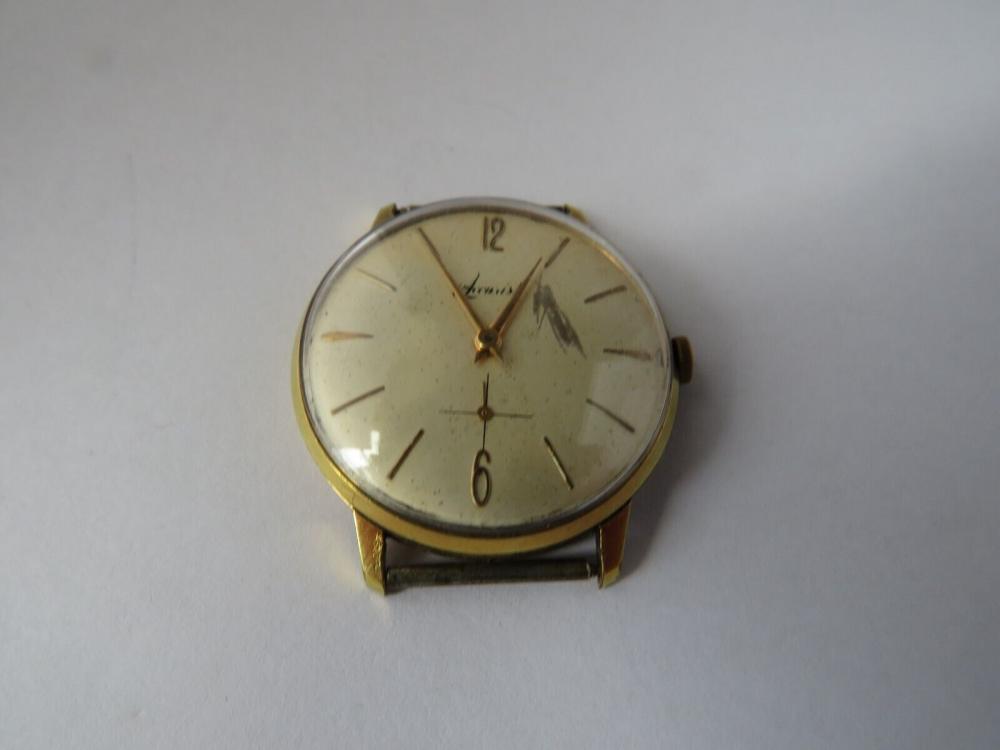Leaderboard
Popular Content
Showing content with the highest reputation on 10/26/22 in all areas
-
5 points
-
I can absolutely feel with you Ross. Only living on a very small army pension right now myself. It’s the old thing, “when I had the money, I didn’t have the time, now I have the time I don’t have the money “3 points
-
on a quartz watch if you put the watch in setting mode it stops the drive for the hands but the oscillator continues to run so it is drawing a very tiny quantity of power. But how long of storage are we talking about? Because if the storage time is long enough the battery will finally exhaust itself whether power is being drawn or not and then there's always the possibility it will leak. In other words once it gets through consuming its internal chemicals it will start to consume its case and then leak out and make a mess of your quartz watch.3 points
-
Hi Ross you are at a point where its broke so the worst case will be its still broke, best you fixed it another lesson learned and another skill to add to the list, As Joe said its doable so have a go , I have done them in the past with a20x loupe, now I'am past that as the eyesight isn't as good as it was. good luck.2 points
-
Hi Ross we have all been there and got the T shirt many times and learned many a valuable lesson in getting there. So dont beat yourself up it happens. I know its frustrating and you always blame your self Endeavour's statement is 100% true, it takes experience.2 points
-
Welcome to the club Rest assured that we all had our setbacks and disappointments, but funny enough, those turned out to be valuable lessons. Don't let this get you down, pick up another watch a try again, and again and again. There are things which can not be learned from a book or a video, it takes hands-on experience. Lots of Suc6 !!2 points
-
watched it awhile back. tragic and fascinating at the same time. I have a few dollar watches that have the radium. I don't touch em and they sit in sealed plastic bags. you can really tell the difference when I hit them with a UV light. even some at 100 years old they light up like nothing we use today. I've been told you can work on them with gloves and a mask, in a well ventilated area. But to wash your hands and clothes after. nah. I'll just leave them where they're at to look at them. good flick. .2 points
-
2 points
-
1 point
-
This system was also used on a lot of Roamer watches of a certain era. As @Geotex points out the sizing of the crystal is important. Its fit to the case back/capsule needs to be snug, and its outer diameter needs to be a friction fit into the bezel. That way when everything is pressed together a good water resistant seal is achieved, keeping everything secure as the bezel compresses the crystal tightly onto the back. There shouldn't be any need for glue unless the right size crystal is no longer available. If that is the case then get a crystal that fits the case back as well as possible but has too great an outer diameter and carefully sand it down to a nice tight fit into the bezel.1 point
-
Understand your position perfectly Ross. Without a scope for me personally i wouldn't even attempt it. Bide your time and something will come up it always does. As something to look into not an ideal scope but quite usable is this Russian one my missus uses sometimes. I tried it a couple of times when she first got and it was ok. This she only paid 40 quid on ebay for, but i noticed one last week that went for 20. An absolute bargain if it works ok. The magnification is x 8.7 with reasonable field of view, no light source but i found one for her at a carboot that was just a quid. She fiddles around with tiny ladies Timex watches when she has time.1 point
-
That appears to be the style used for many Benrus watches (what you call a module I call a capsule). They sold a special press with unique dies for assembly and disassembly, but manual pressure is often sufficient, especially since nobody is expecting them to be waterproof anymore. The thickness and fit of the crystal is an important part of the geometry needed to get a tight engagement between all the parts. I wonder if yours was a not-quite-thick enough replacement crystal that required some additional glue when it was put together because the OD didn't allow a snug fit?1 point
-
They will generally break at that point if its an old carbon spring. It may still be within timing. Repin but leave very little on the spare adjustment end. You sometimes see movements from the factory with the hs glued in. Just make sure the hs is squared up with the stud or at least close enough to allow for it being after the glue has set. The repinning will give a little more readjustment if using a new stud pin. Leave extra length and the flat of the pin against the outside of the spring. Twisting the pin will then help to correct the hs's vertical plane. ( The hs has a plane ? I wonder which one, a 747 ? ). Very little tools needed Ross, but definitely a scope, a tweaked set of tweezers can help. If you want to have a go we can all talk you through it mate, it sounds more complicated than it actually is.1 point
-
You can unpin the stud with a stout tweezers, grab the pin, wiggle as you try pulling the pin out, helps to alternately push on the pin end from the other side. You can also repin the hairspring without special tool. Just secure the regulator arm in place so it wouldn't detach, or you can detach the arm to pull the pin out. ST96 is easy to work on, though judging from the picture the hairspring looks too short by as much as five mm.1 point
-
No problem, proceed as follows. 1- Unpin the stud and clean the stud hole. 2-Put the balance back on the maonplate with impulse jewel in the fork horn and pivot in jewel hole. 3- Open the gap of the regulator arm 4- Put the cock on the mainplate and guide the pivots in jewel hole. 5- Thread the hairspring through the gap of the reg arm and the stud hole and fill its hole with epoxy 5 glue, let cure. You have a mobile stud carrier which lets you put the oscioator in beat when regulating. Good luck Correction unpin the stud pin, thats the little pin that attaches hairspring to the stud.1 point
-
First of all, I've written this post so many times in my head while fumbling around on the floor for a part, or breaking something I was trying so hard not to. In fact, I recently posted about screwing up the hairspring on a Rolex, of all things. Just gotta take a breath, step away, and come back refreshed another time. And second, it looks to me like there's still a bit of hairspring stuck in the stud on the balance cock--it's hard to tell definitively from the photo, but take a good look at the stud here and see. If it is, then your hairspring is broken and you may want to find a donor movement.1 point
-
We've all been there Ross, you know that, dont let it get to you mate. You will just have to practice that proceedure specifically. To get good at anything we all know practice makes perfect. Good vision a steady hand and dexterity are required you can work and improve upon all these points Ross. I'm not sure what you mean by the balance pivot stays and detaches from the holders, what are you working on Ross ?1 point
-
I feel with you! Watchmaking can be very frustrating. There are few other activities where small mistakes are punished that severely…1 point
-
I just Googled this topic and learned that "almost every watch between 1917 and the early 1970s used a form of radium paint", and that "the easiest way to tell if a watch is radioactive is to pick up a simple Geiger counter". However, the article also mentions other ways or hints to determine if a watch uses radium. I didn't realize how dangerous radium is until I read the article and considering that many of the watches we enjoy working on are pre-1970s, I'm going to be more cautious in the future. Here's the article.1 point
-
Also a question of the dome radius. A high domed punch will leave a small chamfer but rather push the metal aside. A lower domed one will push the metal more down and close the hole, but produce a wider chamfer. A bit dangerous just with those narrow shoulders of barrel arbors, where all support is needed to avoid digging into the brass. I admitted that I do this, too, to avoid higher cost and prolong the period until a "real" repair will be done. But this punching is just a short term, not lasting repair. Frank1 point
-
Hi The way I store my quartz watches is to remove the battery all together and attach a label with the battery details on it, that way no leaks no problems other than ageing oil so best to give then a run once in a while.1 point
-
That's how I did it until I saw Kalle Slaap's video. As @ifibrinpoints out, if the plate isn't flat, it can be difficult to sit it on a flat stump, and get the punch exactly centred. I had this problem and ended up with the created chamfer not being symmetrical. Using the two punches makes it much easier to get the plate and punches perpendicular, and the punches centred in the hole. As @praezis points out, there is a danger of increasing vertical play, but this shouldn't usually be a problem. The pic shows one I just did, with the chamfer arrowed, being much less than the width of the arbor shoulder.1 point
-
If you put train wheels or any wheels with fine pivots in rust remover, it can cause pitting on the pivots, or a layer of iron phosphate to grow on the pivot surface. Both aren’t good for amplitude, and you may have to polish them/burnish them to give a good smooth surface.1 point
-
john nailed it. have you looked on the pocketwatchdatabase.com ? They have tons of info, including your case serial number. That case was originally patented in 1859 and was given to James Boss, the inventor of the process by which he made it. Keystone would make this style using his patented methods and then stamp J Boss style under the Keystone brand. they have too much stuff to list here. I did read a copy of his original patent tho. very interesting. the case may or may not have railroad grade stamped on it. 974 isn't a railroad grade but it still a very nice piece. I have one in guild the other plain nickel but really nice damaskeening. Just picled up a Bunn Special thats on it's way. yours looks really good.1 point
-
How would be just closing up the arbor hole from just the top face Frank leaving the underside flat so the endshake remains the same.1 point
-
did you know if you went back early enough in American pocket watches that the movement almost never came in a case. You go to the jewelry store the movements would be in one display case the cases would be somewhere else you got to pick and choose. then there is the other problem between now in 1918 is quite a long time if for unknown reasons somebody decided they didn't like their case arose worn-out odes or whatever there's nothing to prevent you from swapping to another case. Often times you look a pocket watches and you can see other casings screws now that's a definite giveaway that the case was used for another watch. So basically all it means is between when it was made and when you've got it somebody put it in a new case. this by the way is a very good thing. Thoroughly oils tended to be organic oils they would go bad with time the watch would come to a nice safe stop and not disintegrate by just running forever without lubrication. So if you're lucky somebody will take great grandpa's watch put it in the sock drawer and it's been sitting there for the last hopefully a very long time of years then all your watch needs is cleaning possibly a mainspring.because the unfortunate reality of a watch that's been running continuously is probably didn't get normal servicing which in the early days would've been yearly and things start to wear out so it's much nicer if it's all gummed up and not running1 point
-
Today I've ben working on a 21 Jewel Peseux 320 based Accurist, probably from the early 1950s, with a number of issues including a broken stem. It rocked in at just under half of the 404 club entry requirements. Its now all back together and keeping reasonably good time, all be it a little fast. I'll regulate it more exactly if it makes it through the next 24 hours without any issues. The dial has a little bit of cosmetic damage (not my doing), and there was plenty of evidence of earlier attempts to work on it in the past, including that rather obvious skid mark on the top of the balance cock. I managed to slightly improve the dial, however it will never be perfect, but since it is a Peseux 320 for one pound ninety nine pence, can live with that. The band claims to be "Burberry" and "Genuine leather", but I have my doubts about both claims, however it was the only 17mm strap I had left in my stash. I may change it later, but for now, it stays.1 point
-
It just looks as though the hs needs repinning Ross. It maybe a little short mate but you may still be within timing regulation. If you have a scope give it a go .0 points



